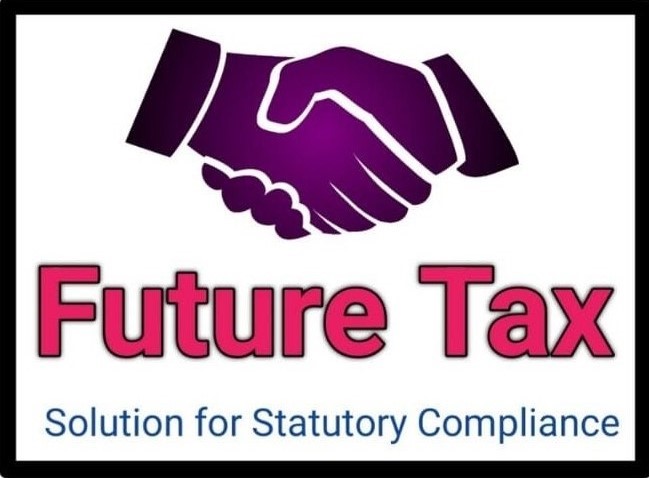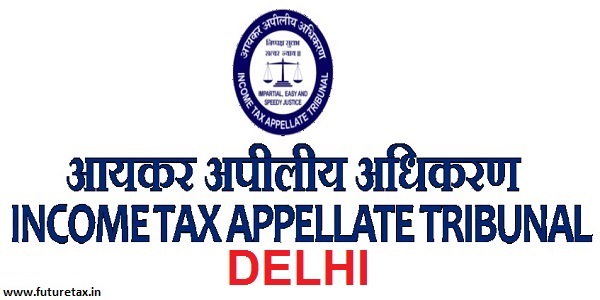
GST on Preferential Location Charges in Real Estate – 54th GST Council Meeting-Future Tax
- Income Tax
- September 14, 2024
- No Comment
- 89
- 19 minutes read
GST Conundrum on Preferential Location Charges in Real Estate [In perspective of 54th GST Council Meeting]
Recently, the 54th GST Council meeting provides a clarity for real estate sector in respect of the taxability of preferential location charges (PLC) collected by the builders for residential, commercial, and industrial properties.
It is to be noted that this article is based on press release of said Council Meeting. CBIC has yet to come with Circular on this matter.
1. Issues:
Preferential location charges (PLC) are additional charges collected by developers for providing a preferred location within a project, such as a scenic view or proximity to amenities.
GST Department is sending notices for charging 18% GST on PLC by keeping it separate from the construction services and therefore the issue before the industry is:
Issue 1: Whether PLC is to be considered as an integral part of the overall supply of construction services and is subject to the same tax treatment as applied for construction services or PLC is to be taxed separately @18% GST?
Issue 2: Whether benefit of abatement of 1/3rd of the amount charged in name of PLC shall be available or GST shall be applicable on the total amount charged on account of PLC?
Issue 3: Whether PLC shall be taxed on the booking of ready property (i.e. where the entire consideration has been received after issuance of completion certificate, where required, by the competent authority or after its first occupation, whichever is earlier)?
Issue 4: Can a refund be claimed by builder where the 18% tax has been charged on PLC by treating it as separate supply and paid to the government?
This article delves into the nuances of GST applicability on PLC in the light of recent press release by the GST Council.
2. Excerpts of 54th GST Council Meeting:
As per the recommendations made during 54th meeting of GST Council, it has been clarified as per below:
“location charges or Preferential Location Charges (PLC) paid along with the consideration for the construction services of residential/commercial/industrial complex before issuance of completion certificate forms part of composite supply where supply of construction services is the main service and PLC is naturally bundled with it and are eligible for same tax treatment as the main supply that is, construction service.”
On the perusal of the text written in the Press Release of the above recommendation, four pertinent issues arise as stated above.
3. Evaluation:
To appraise the above issues and implications thereof, let us firstly run through the subject matter, i.e. PLC from real estate perspective
What is PLC?
When a real estate developer sells immovable property, whether it is developed plots, residential units, or commercial spaces, various additional charges may be collected from buyers. One such charge is the Preferential Location Charge (PLC).
PLC is an extra cost that buyers pay to secure a unit with a superior location advantage. This could include factors like the direction the flat faces, the floor it’s on, the views it offers such as park-facing, lake-facing, sun-facing, east facing etc., and its proximity to other facilities. Essentially, PLC represents the premium collected for these added benefits.
4. Issue of taxability on PLC charges under GST: Composite supply or Separate supply?
4.1 Let’s put an illustration
Here’s an example to have the better understanding of GST implication on Preferential Location Charges-
Shri Madhav books an apartment in a construction project for a consideration of INR 10 Crores but with an additional benefit of sea-facing. For such added benefit, his consideration increases by an additional INR 2 Crore with total consideration coming up to INR 12 Crores.
It may be observed that the agreement between builder and the buyer refers to the sale of immovable property. The buyer agrees to pay in advance for certain other services that he will enjoy in addition to the construction service, and to pay a single consolidated amount for all these supplies.
4.2 Definition of Composite Supply: As per Section 2(30) of the CGST Act: Unless the context otherwise requires
“composite supply means a supply made by a taxable person to a recipient consisting of two or more taxable supplies of goods or services or both, or any combination thereof, which are naturally bundled and supplied in conjunction with each other in the ordinary course of business, one of which is a principal supply;”
4.3 Analyzing the concept of composite supply with the help of Education Guide: While examining whether these services are naturally bundled and are supplied in conjunction with one another in the ordinary course of business and whether the construction supply is the dominant element and all other services in the bundle are ancillary or incidental to the supply of the construction service. It may be observed that the term ‘naturally bundled’ is not defined in the CGST Act / SGST Acts but reliance may be placed on Para 9.2.1 of the Education Guide that CBEC published in 2012, in this regard, which says that in contrast to other combinations, the services that are naturally bundled can be treated as provisioning of a single service that lends the bundle its essential character. Para 9.2.4 of the Education Guide ibid which says that whether the services so bundled are provided in conjunction with one another in the ordinary course of business would depend upon the normal or frequent practices adopted in a business and can be ascertained from indicators like whether a large number of service receivers reasonably expect such services to be provided as a package or whether a majority of the service providers in a particular area of business provide these services in a bundle.
4.4 Reading of Circular 177: Let’s look at the clarification given by CBIC for the treatment of PLC when it is collected along with lease premium for long term lease of land. CIRCULAR NO. 177/09/2022-TRU also provides that PLC is given the same treatment as lease premium for long term lease of land is treated under GST considering it to be the integral part of supply of long-term lease of plot and therefore, location charge is nothing but part of consideration charged for long term lease of plot.
Accordingly, it is clarified that location charges or preferential location charges (PLC) paid upfront in addition to the lease premium for long term lease of land constitute part of upfront amount charged for long term lease of land and are eligible for the same tax treatment, and thus eligible for exemption under Sl. No. 41 of notification no. 12/2017- Central Tax (Rate) dated 28-6-2017.
Authors do hold a view that even after the clarification given vide Circular 177 for treatment of PLC qua composite supply, there is not a need to provide the clarity on this issue.
4.5 Additional Reading of Notification 3/2019-CT(R): The GST rate is 1.5% (subject to 1/3rd abatement in value) for properties that fall under the category of affordable residential apartment. It is defined as below:
Affordable residential apartment is a residential apartment in a project which commences on or after 01-04-2019, or in an ongoing project in respect of which the promoter has opted for new rate of 1.5% (effective from 01-04-2019) having carpet area – upto 60 square meter in metropolitan cities and upto 90 square meter in cities or towns other than metropolitan cities the gross amount charged for which, by the builder is not more than 45 lakhs rupees.
For the purpose of determining the threshold of the gross amount of Rs.45 lakh for affordable residential apartments, all the charges or amounts charged by the promoter from the buyer of the apartments shall form part of the gross amount charged and shall also include preferential location charges.
Of course, the definition has a different purpose from the value determination for GST levy purpose. The intent is clear that PLC forms part of the value of composite supply.
4.6 Conclusion: Therefore, in the present case, the PLC has to be bought as a package, where the construction service remains the predominant element, while accepting the fact that the buyer has the option not to pay for such service. It may be concluded that builder is providing a composite supply, where construction service is the principal supply.
5. Issue of availability of 1/3rd abatement on PLC charges under GST:
5.1 Revenue’s approach: Department is contesting that in the Agreement for Sale, composite price comprising all elements of price is mentioned as consideration. However, where the price element of PLC is separately specified in the contract and so, there should not be the admissibility of abatement of 1/3rd of the amount charged for floor rise and directional advantage as opposite to supply of construction service.
Department is having the argument that preferential location charges cannot be traced directly to the value of any goods or value of land but are as a result of the development of the complex as a whole and the position of a particular unit in context with that of the complex and therefore 1/3rd abatement should not be made available to PLC.
5.2 Reading of Section 8 and 9 of CGST Act: Section 8 provides the tax liability on composite supplies by considering the supply as a principal supply. It is reproduced as below:
“The tax liability on a composite or a mixed supply shall be determined in the following manner, namely: –
(a) A composite supply comprising two or more supplies, one of which is a principal supply, shall be treated as a supply of such principal supply; and
(b) A mixed supply comprising two or more supplies shall be treated as a supply of that particular supply which attracts the highest rate of tax.”
Authors draw the attention on the provision of section 8 that once two more supplies are considered as composite supply then it shall be treated as a supply of such principal supply. It means it shall be treated as a supply.
Then an issue arises that whether there can be 2 values of a supply. Naturally there cannot be two values of a supply. To evaluate it, it is also important to refer the charging section 9(1) of CGST Act:
9(1) Subject to the provisions of sub-section (2), there shall be levied a tax called the central goods and services tax on all intra-State supplies of goods or services or both, except on the supply of alcoholic liquor for human consumption 2[and un-denatured extra neutral alcohol or rectified spirit used for manufacture of alcoholic liquor, for human consumption], on the value determined under section 15 and at such rates, not exceeding twenty per cent., as may be notified by the Government on the recommendations of the Council and collected in such manner as may be prescribed and shall be paid by the taxable person.
It may be noted that section 9 uses the word ‘value’ and not the word ‘values’. Therefore, Authors carry a view where two or more supplies are considered as composite supply and where it shall be treated as a supply of such principal supply then there cannot be 2 values of such supply. Therefore the 1/3rd abatement shall be available for PLC as well.
5.3 Reference of FAQs about availability of 1/3rd abatement: Authors also draw the kind attention on FAQ (MEDIA & ENTERTAINMENT SECTORAL GROUP, HYDERABAD), DATED 28-6-2017 CGST in series of FAQ ON GST IN RESPECT OF CONSTRUCTION OF RESIDENTIAL COMPLEX BY BUILDERS/DEVELOPERS, also provides that PLC is a part of composite supply and hence would be attracting the same treatment as main supply of construction services and therefore GST on 2/3rd of the amount charged on account of PLC shall be taxable.
The FAQ is reproduced as below:
“Question- Whether “other charges” collected by the builders/developers towards “prime/preferential location”, “parking facility”, “fire fighting installation” etc. can be deducted from the total consideration for payment of GST?
Answer- Charges towards “preferential location/floor/facing”, “parking facility”, “firefighting installation”, “transformer”, “Gen-set facility” etc., collected by the builders/developers also attract GST as applicable to the principal supply (construction service) as they are naturally bundled and supplied in conjunction with the construction service.
Therefore, GST at the rate of 18% on 2/3rd of the Value for such naturally bundled services is payable on the said charges also.”
5.4 Conclusion is amount charged PLC shall also be subject to 1/3rd abatement being part of the composite supply.
As per this discussion, in the above illustration, the abatement shall be available on entire 12 crore rupee and thereby GST shall be applicable on 2/3rd value i.e. 8 Crore.
GST treatment on PLC in case of Sale of Ready Property: Whether PLC shall be taxed on the booking of ready property (i.e. where the entire consideration has been received after issuance of completion certificate, where required, by the competent authority or after its first occupation, whichever is earlier)?
As per para 5(b) of Schedule II of the CGST Act, construction of a complex, building, civil structure, or a part of it, which is meant for sale wholly or in part shall be supply of service. However, if full consideration is received after the issuance of the certificate of completion, it is not considered a supply and is out of purview of GST.
In other words, GST is applicable only on booking of under-construction properties. Authors have a view that PLC shall be treated in the same manner as the consideration for apartment is treated under the GST law. Thereby, it can be concluded that no GST shall be applicable on PLC despite the booking of ready property.
So, tax shall be applicable in the illustration referred above, is on 8 Cr (i.e. 2/3rd of 12 Cr).
6. Can a refund be claimed by builder where 18% GST has been charged on PLC by treating it as separate supply and paid to the government?
Article 265 of Constitution states that no tax shall be levied or collected except by authority of law. Therefore, in absence of any levy provision, the tax cannot be levied or collected.
In this backdrop, there are two options:
1. Builder can claim the refund u/s 54 subject to the unjust enrichment.
2. The builder can adjust the excess GST paid against the GST collected against their output GST liability as per section 39(9) of CGST Act read with Circular 26/26/2017.
Needless to state that builder has to ensure the proper compliances of statutory records of section 35 read with rule 56 of CGST Rules.
Authors
 |
 |
 |
| ADV. VIVEK LADDHA LL.B., CA, CMA, CS Chief Advisor NAREDCO-RAIGAD | CA. MANISH GUPTA FCA, B.Com Chief Advisor NAREDCO-RAIGAD | DINESH DOSHI TULSI REALTY President NAREDCO-RAIGAD |
Authors may be reached at [email protected]
*****
Disclaimer: It is stated that the Press Release contains the gist of certain matters for clarification. Of course, these matters will be crystallized with the publication of the circular. This article is authored based on the reading of the Press Release only. Authors and publishers shall not be responsible for the decisions taken based on this document.




